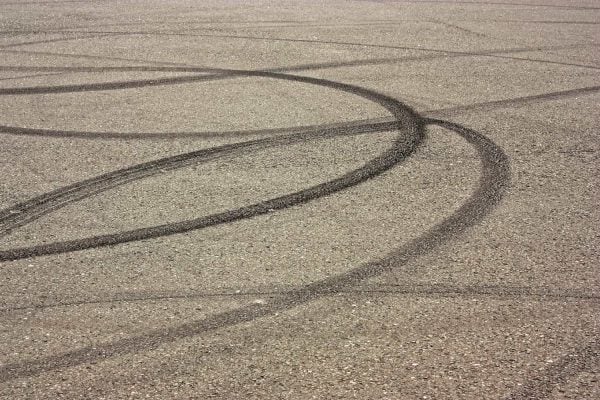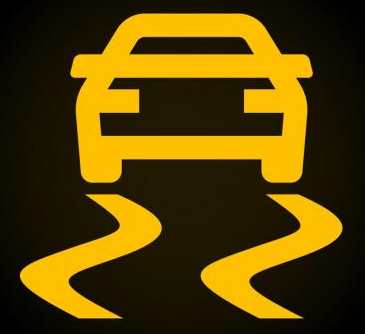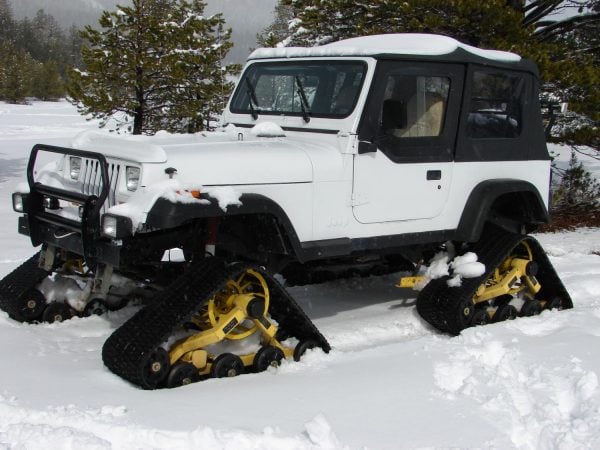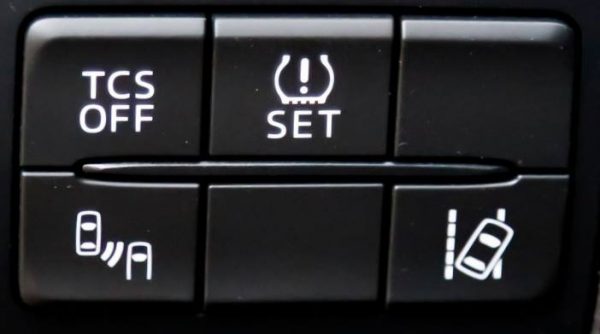If your engine delivers too much power to your wheels and it overcomes the friction between the tyres and the road, you get wheelspin. Traction control is a method that stops this from happening and it has great safety benefits.
If the driven wheels on a car, truck or motorbike spin, they have less grip on the road (once friction is overcome, there’s less inertia, and also the tyre will create a thin layer of molten rubber which is more slippery). In a corner, this can mean the vehicle understeers if it’s
If you were driving two or three decades ago, seeing black tyre marks on the road was very common from people braking and, less so, accelerating (cars weren’t so powerful then). System like anti-lock braking and traction control have largely eliminated this and it’s now uncommon unless done deliberately.

Why would your vehicle spin its wheels?
When you press the accelerator or turn the throttle, more fuel is fed to the engine, the power increases and a turning force is generated in the driven wheels which propels the vehicle forwards. There’s only so much friction between the road’s surface and the rubber of the tyres and if you exceed that, the rubber slips over the surface causing wheelspin.
Different surfaces have different coefficients of friction. Dry tarmac has much more grip than ice, for example.
If your vehicle is two-wheel drive, e.g. the front wheels or the back wheels, technically only one wheel is delivering the acceleration at any one time because you have a differential which allows one wheel to turn more slowly than the other (this is required for cornering). You may have experienced this trying to accelerate briskly out of a tight intersection; the inside wheel, which has less weight on it due to your turn, will tend to spin.
If your vehicle is all-wheel drive, you will have one front wheel and one rear wheel propelling you, unless it’s fitted with a limited slip differential on the rear, in which case three wheels will be propelling you.
If you ride a motorbike, you just have one wheel, unless you’re riding an Ubco.
What happens during wheelspin?
Front-wheel drive
Straight line driving: the front of the vehicle will tend to pull either to the side where the wheel is spinning or to the downhill side. The grip can switch from side-to-side, meaning the car could lurch one way and then the other.
Cornering: you will understeer, i.e. go straight ahead
Rear-wheel drive
Straight line driving: the rear of the vehicle will slide in the direction of any slope in the road. Normally a road has a crown in the middle, so the rear will tend to slide to the left, towards the edge of the road.
Cornering: the rear of the vehicle will try to continue straight on, meaning it will swing out towards the outside of the curve. This is something that happens deliberately in drifting. If you are pulling a trailer (e.g. a caravan for cars or a semi-trailer for trucks), you could jack-knife, where the trailer pushes straight on, turning the towing vehicle around. Motorcyclists tend to end up crashing as there’s often little warning of the slide.
All-wheel drive
When all wheels are driven, there is much less chance of wheelspin
Straight line driving: the vehicle will slide in the direction of any slope
Cornering: the vehicle will slide generally evenly towards the outside of the curve. The actual angle of the slide will depend on how much power is delivered to the front wheels in relation to the rear wheels, plus the overall setup of the vehicle. Consumer vehicles tend to be set up to understeer as this is the easiest to rectify for a driver (simply lift off the accelerator).
How does traction control know when the wheels are spinning?
The wheels have sensors which monitor how fast they are spinning. This information is sent back to a central processing unit (CPU). If one wheel starts spinning much faster than the others, the CPU instructs a hydraulic modulator on that wheel to rapidly apply the brakes on and off to bring its speed down.
It uses the same sensors and mechanisms as anti-lock brakes, but in reverse.
When does traction control give the most benefits?
When you have a powerful vehicle, breaking traction is easy, but other scenarios can cause wheelspin:
Roads are made more slippery by ice, water, loose stones and oil. Sometimes you won’t see the cause of a road being slippery (e.g. black ice), but traction control will detect it.
Towing a heavy load means more effort is required to get moving, but there’s still a similar amount of friction between the tyres and the road (there could be slightly more friction if the trailer is applying more weight to the driven wheels). There’s more chance of spinning the wheels under acceleration.
Accelerating uphill is the same principal as towing a load only this time gravity is holding the vehicle back. There’s more chance of wheelspinning when accelerating uphill.
Corners change the weight distribution of your vehicle, meaning more weight is on the outside wheels. This reduces the grip of the inside driven wheel or wheels, increasing the chances of breaking traction.
How do you know if your vehicle has traction control?
The universal dashboard symbol for traction control is this:

In normal driving you would never need to turn traction control off, but there are some circumstances where it might be beneficial:
Track days: if you’re a driving enthusiast and you like to take your car on the track, turning traction control off might give you more of the experience you want (although, it won’t necessarily make you any faster)
Snow, sand and mud: in some scenarios it can be better to power your way through an obstacle, but you need to know what you are doing.

If you do need to turn off traction control, there will be a button labelled TCS, ESC, ESP, or VSA or with the symbol shown above.


